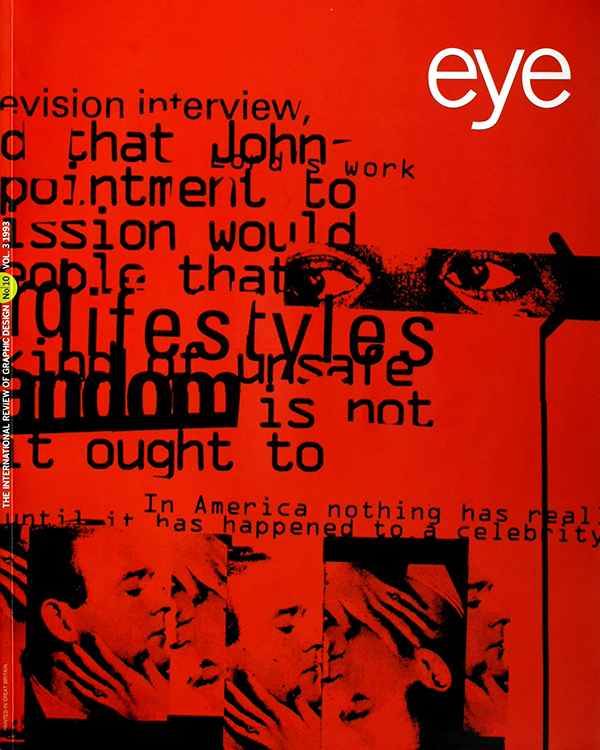Autumn 1993
Output explained
Letter from Joani Spadaro in Eye 10
In light of Steven Heller’s Output-bashing article ‘Cult of the ugly’, I feel it necessary to explain the history and importance of the Output project.
Output was first produced in 1990-91 by my third-year graphic design students at Herron School of Art / Indiana University in Indianapolis, Indiana. These students felt isolated by both their geographic location and status as students. Output was created to establish a dialogue among voices who are not often heard in the design field: students creating experimental / personal work with the context of their culture, but outside the prescribed construction of design for commerce. Each issue of Output is thematic. It endeavours to inform and educate through the integration of its content with its visual structure.
Since the customary designer / client relationship does not exist within this project, students are obligated to seek funding through grant proposals, local vendors, and other resources. The students write and edit, investigate the computer and attendant technologies, learn production and proofing and establish a working relationship with their local post office. In other words, while they are exploring this alternative network, they are acquiring ‘real world’ practical experiences.
Output struck a nerve within the graphic design community. After the first issue was mailed in June 1991, we received praise for the project as well as many requests from individuals and groups to expand the dialogue. The Cranbrook issue was the second to be produced, followed by one from the University of Texas at Austin. Each issue elaborates the views and aesthetics of the students involved. The Herron Output was the only undergraduate student piece accepted for publication in the 14th annual 100 Show of the American Center for Design.
The current edition of Output is a special international-issue produced by students at North Carolina State University (US) and Ravensbourne College of Design and Communication (UK). The intent of the special issue was to prompt discourse between design students on an international level by investigating, examining and responding to questions of national and international identity. Through both written and visual interpretations, students have addressed social, political, economic and technological issues which they feel best distinguished and determine either the real or perceived borders between the United States and the United Kingdom.
The students involved in the project spent a semester pursuing issues raised by an ongoing transatlantic dialogue. Only after a sufficient amount of information had been transmitted and discussed via fax machine, video and ‘care packages’ could an appropriate visual language be determined to convey the ideas and information that had been exchanged. Students have designed the piece as a collaborative effort, not only among their own student groups, but also between each institution.
I hope this description of Output will confirm its importance as a project – both as a pedagogical agent and as a forum for enduring discourse. It is unfortunate that Heller felt the need to denigrate, so vehemently, a project produced by students (dare I say, pick on someone your own size). Heller has Eye magazine, the AIGA and countless other venues to create debate. The students he cites did very well in creating a forum of their own.
North Carolina State University, USA
First published in Eye no. 10 vol. 3 1993
Eye is the world’s most beautiful and collectable graphic design journal, published for professional designers, students and anyone interested in critical, informed writing about graphic design and visual culture. It is available from all good design bookshops and online at the Eye shop, where you can buy subscriptions and single issues.

